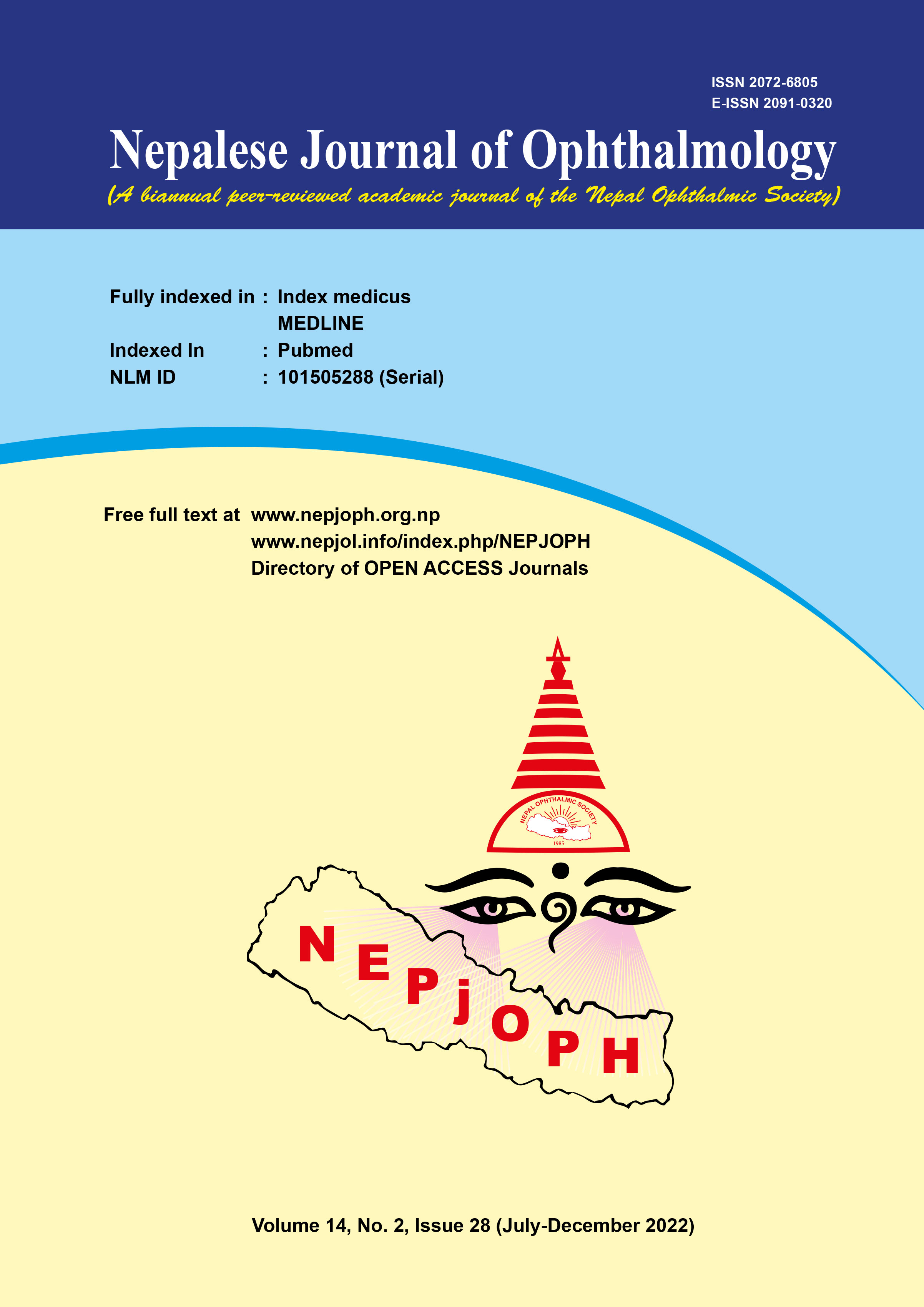Demography, indications and outcome of descemet stripping automated endothelial keratoplasty in Nepal
DOI:
https://doi.org/10.3126/nepjoph.v14i2.40248Keywords:
Descemet stripping automated endothelial keratoplasty, DSAEKAbstract
Background:
Descemet stripping automated endothelial keratoplasty (DSAEK) is performed for corneal endothelial pathology. It had gained popularity over penetrating keratoplasty (PK) because of better outcome.
Methods:
Retrospective data was collected from records of patients who underwent DSAEK from 2005 to 2019. Demography, indications and post-operative complications of DSAEK were analyzed. Outcome was measured in terms of graft clarity and vision.
Results:
93 eyes of 86 patients had undergone DSAEK in the study period of 15 years. Average age of the patients was 61.0 years. 55.9% were female. The common indications for DSAEK were cataract surgery related bullous keratopathy (n=47, 50.5%), Fuchs dystrophy (n=22, 23.6%) and failed graft (n=11, 11.8%). 8.6% of surgeries had graft detachment and 5.3% had pupillary block in the early post-operative period. Outcome analysis was done for cases (n=80) which had follow-up duration of at least 2 months (range: 2 months to 11 years; average: 28.5 months).Endothelial rejection occurred in 8 cases (10.0%), 5 of which regained graft clarity after treatment. At the last follow-up visit, 23.8% (n=19) of grafts had failed, which was mostly due to endothelial failure (n=16); 3 grafts failed due to infective keratitis. 42.5% (n=34) acquired best corrected vision of 6/18 or better. The average astigmatic error was 1.6 Diopter Cylinder by refraction.
Conclusion:
DSAEK showed good outcome with our results comparable to other studies. It had replaced traditional PK in our institute for endothelial dysfunction. Surgeons in the country should be encouraged and trained to do the procedure.
Downloads
Downloads
Published
How to Cite
Issue
Section
License
Copyright (c) 2022 Nepalese Journal of Ophthalmology

This work is licensed under a Creative Commons Attribution-NonCommercial-NoDerivatives 4.0 International License.
This license enables reusers to copy and distribute the material in any medium or format in unadapted form only, for noncommercial purposes only, and only so long as attribution is given to the creator.




